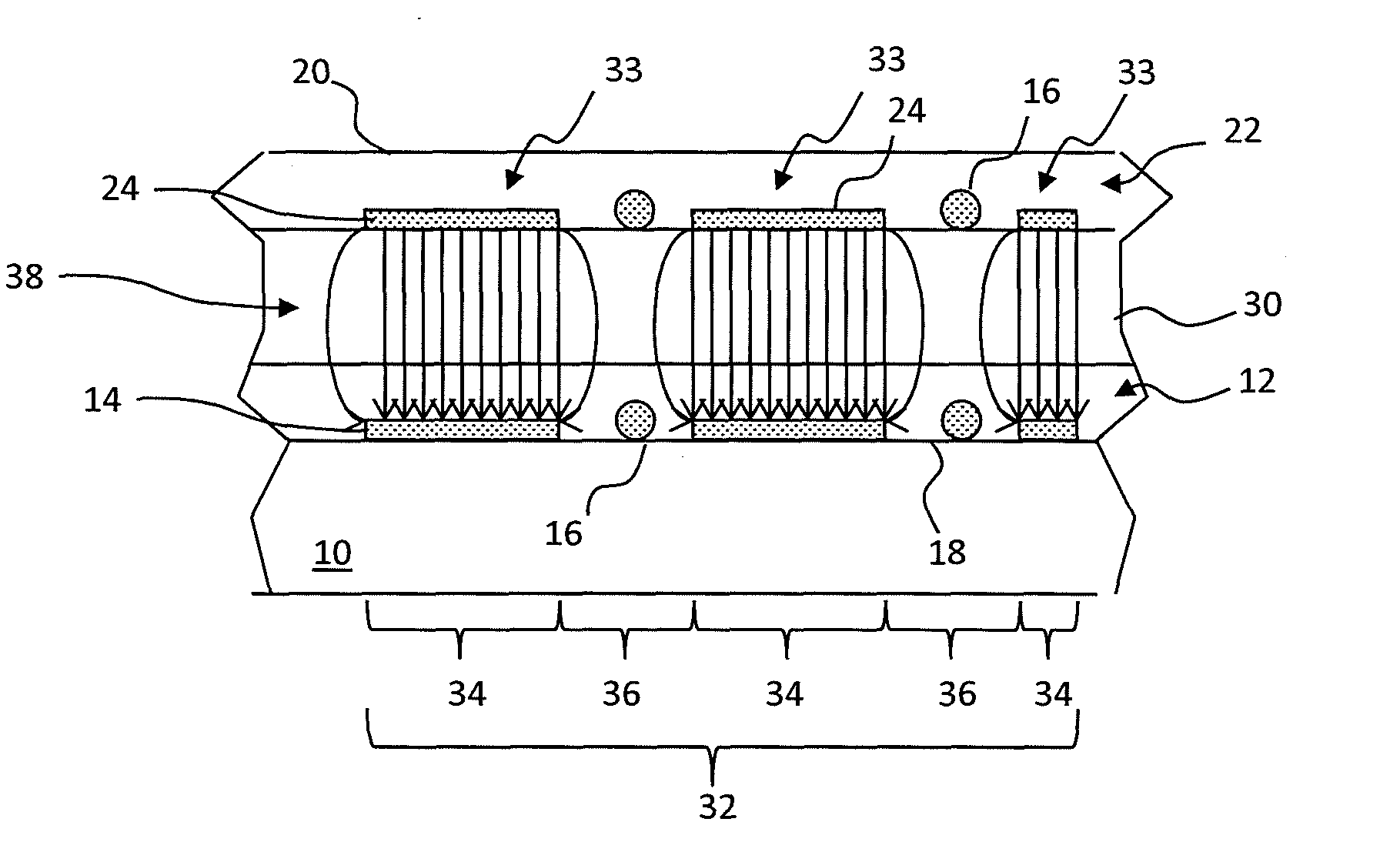Making transparent capacitor with multi-layer grid
a capacitor and multi-layer technology, applied in capacitor manufacturing, conductive material removal by irradiation, instruments, etc., can solve the problems of limited power supply limited substrate materials, limited current carrying capacity of such electrodes, etc., to achieve simple layer alignment, increase conductivity and transparency, and avoid heating materials
- Summary
- Abstract
- Description
- Claims
- Application Information
AI Technical Summary
Benefits of technology
Problems solved by technology
Method used
Image
Examples
Embodiment Construction
[0040]Referring to FIG. 1A according to an embodiment of the present invention, a transparent capacitor apparatus 5 includes a first transparent substrate 10 including a first patterned conductive layer 12 having a first conductive material 14 located over the first transparent substrate 10 forming a first substrate structure 11. A dielectric layer 30 is located over the first patterned conductive layer 12. A second patterned conductive layer 22 including a second conductive material 24 is located over the dielectric layer 30. The pattern of the second patterned conductive layer 22 is different from the pattern of the first patterned conductive layer 12. The first and second patterned conductive layers 12, 14 include gaps 44 defining the patterns. A second transparent substrate 20 is located over the dielectric layer 30, for example over the second patterned conductive layer 22 forming a second substrate structure 21. Portions 32 of the first conductive material 14 of the first patt...
PUM
| Property | Measurement | Unit |
|---|---|---|
| Dielectric polarization enthalpy | aaaaa | aaaaa |
| Electrical conductor | aaaaa | aaaaa |
| Surface | aaaaa | aaaaa |
Abstract
Description
Claims
Application Information
 Login to View More
Login to View More - R&D
- Intellectual Property
- Life Sciences
- Materials
- Tech Scout
- Unparalleled Data Quality
- Higher Quality Content
- 60% Fewer Hallucinations
Browse by: Latest US Patents, China's latest patents, Technical Efficacy Thesaurus, Application Domain, Technology Topic, Popular Technical Reports.
© 2025 PatSnap. All rights reserved.Legal|Privacy policy|Modern Slavery Act Transparency Statement|Sitemap|About US| Contact US: help@patsnap.com



